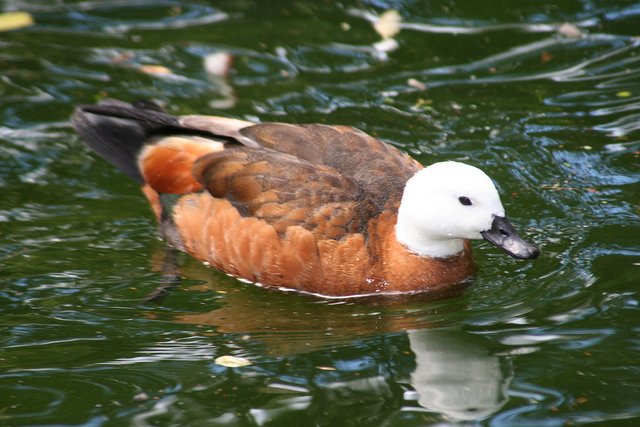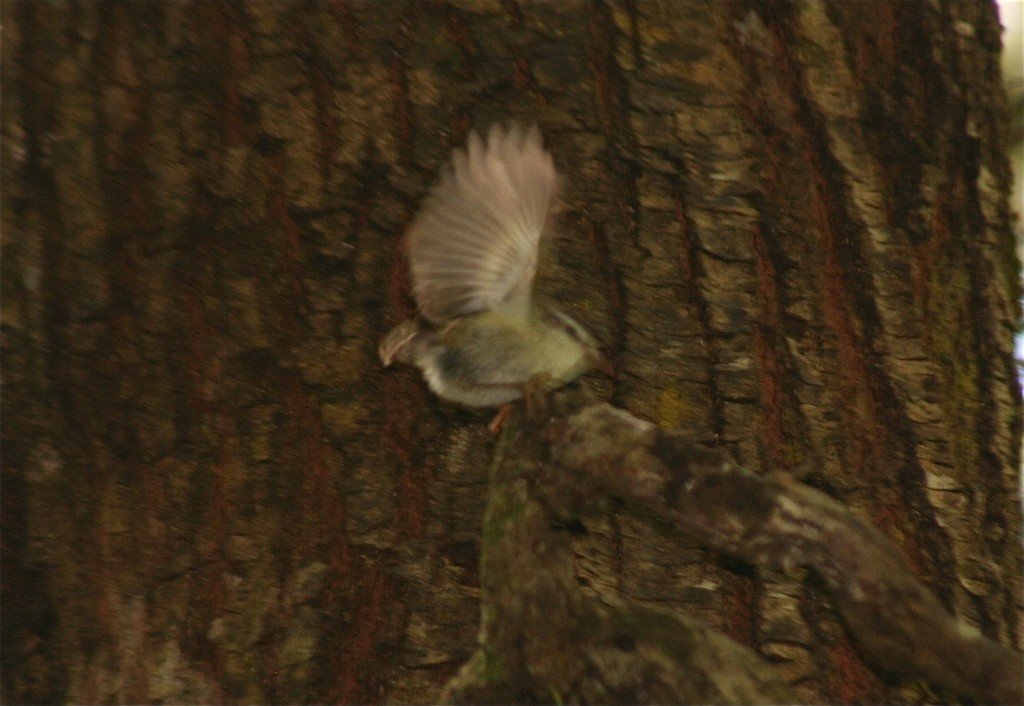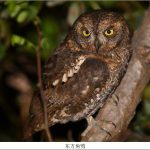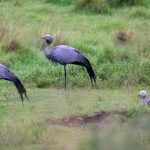While most of 10,000 Birds’ writers and readers are enduring the northern winter coming early, down here in Wellington we are enjoying one of the nicest springs I’ve known. All around the city trees and plants are flowering and birds are pairing off. Last week the weather was warm, sunny and calm (the later the rarest of the nice weather for a city that usually borrows its wind from Antarctica). On Tuesday my flatmate told me she was going over to Day’s Bay for work, and asked me if I wanted to come over for an hour to take a walk. Given the stunning sunny day and the fact that I had never been there before I leapt at the chance.
Wellington is positioned on the south-western corner of Wellington Harbour, with the opening to the sea on the southeast. Go north from Wellington and you reach Petone and the Hutt Valley with is the northern shore of the harbour, and from Petone you can reach the eastern side of the harbour. Here the southern extent of the Rimutaka Ranges drops precipitously into the harbour, restricting the growth of settlements. What small villages there are squeezed between the hills and the sea. Day’s Bay is one of these villages.
 Wellington Harbour from high up in Wellington looking north east. To the right the large area of buildings are Central Wellington, most of the green area at the front is the Wellington suburb of Kelburn. On the other side of the harbour is the long coastline of Petone, to the right of that are the hills of the Rimutaka Ranges with the few white specks of houses on the shore. For a larger image check here.
Wellington Harbour from high up in Wellington looking north east. To the right the large area of buildings are Central Wellington, most of the green area at the front is the Wellington suburb of Kelburn. On the other side of the harbour is the long coastline of Petone, to the right of that are the hills of the Rimutaka Ranges with the few white specks of houses on the shore. For a larger image check here.
We parked at Williams Park, a small area of playing fields with a large duck pond. I only had an hour, so after quickly checking the duck pond my flatmate hurried me up the trails before going about her business. The trail led quickly into part of the park designated to protect the forest on this side of the harbour, the (rather uninspired for such a pretty location) East Harbour Regional Park. The forest on this side of the harbour is quite different to the forest in Karori. Unlike Karori Sanctuary the forests here have not been logged, so the composition and age of the trees is quite different. The area has a lot of Southern Beech, which is highly characteristic of South Island, and gives the woods a distinctive feel. The forest is alive with birds, particularly the ubiquitous and noisy Tui, who’s frantic chases with fluttering wings spook you as they dash madly past. I also saw the energetic squeaky toys that are New Zealand Fantails, and the large New Zealand Pigeons/Kereru. These last birds were particularly showing their readiness for summer as all the ones I saw were in pairs. Although I didn’t see any on this day, the calls of Grey Warblers were everywhere. They have a highly characteristic ascending series of notes that one of my friends once described as the first few bars of “When the Saints Come Marching in” (a comparison that means I’m always humming that song when walking in New Zealand’s forests).
Attractive as the forest was, after half an hour I had to turn around and head back. My flatmate wasn’t quite finished, so I explored the duck pond. The duck pond had some escaped Muscovy Ducks and large numbers of Mallards Mallard/Grey Duck Hybrids (often called Grallards now), as well as a small family of one of New Zealand’s most attractive ducks, the Paradise Shelduck. These small shelducks exhibit reverse sexual dimorphism, with the plumage of the females being brighter than the males. They are also a species that has reversed the usual trend of endemics, actually thriving and even expanding in numbers since the arrival of humans. The pond also had a small colony of shags nesting in the large trees overhanging the pond. Several large Little Pied Shag chicks could be seen with their parents, and there were also some Little Black Shags, although I couldn’t tell if they were nesting too.
 Female Paradise Shelduck (Tadorna variegata)
Female Paradise Shelduck (Tadorna variegata)
Given the success of the previous day I followed up my visit by returning the next day, this time under my own steam. Instead of climbing up from Day’s Bay I went further down the harbour to Eastbourne, the largest settlement on the eastern side of Wellington Harbour. The climb up from Eastbourne into the park is more exposed than at Day’s bay, and the vegetation is low shrub, which gives less chances to bird but more chances to take in the views of Wellington across the water. But soon I was over the crest of the first hill and into the valley. Here the forest rose up, again predominately Southern Beech but also lots of tree ferns and some Rimu, particularly further down the valley.
Once again the forests here are alive with bird song. This part of East Harbour Regional Park is a form of mainland island, not in the sense that it is fenced off, like Karori Wildlife Sanctuary or the Hutton’s Shearwater colony at Kaikoura, but rather it is regularly treated with poisons and traps in order to control the numbers of damaging invasive species in the park. Similar projects are being undertaken across the country. As I walked down through a massive glade of beech I was buzzed by Tui, saw more pairs of New Zealand Pigeon/Kereru and had a Grey Warbler land right in front of me. I managed to get a couple of bad shots before it flew off. Another nice sight was a family of New Zealand Fantails, the shorter-tailed youngsters begging loudly for handouts from the hard-working parents.
A bit further down the hill, high up in the canopy, I heard a very high-pitched “zhipt” call. This was the bird I was looking for in this forest, the Rifleman. This is one of the two remaining species of New Zealand wren, those tiny sometimes flightless often extinct birds that make up an endemic New Zealand family. The Rifleman is the most common species, occurring all across New Zealand where suitable habitat exists. In the Wellington region they are found in native forest but only on the eastern side of the harbour. This was the first time I had seen them in a very long time (I briefly saw one on South Island ten years ago) but they were too high up to see well. I soon found another group, this time with five individuals. The group was clearly a family, as I saw one of them feeding another a small grub or caterpillar. They were, as is typical for tiny birds, energetic and fast moving; unlike some of their extinct relatives they can fly and regularly flew from tree to tree. They are tiny, New Zealand’s smallest bird in fact, and almost tailless (making them easy to distinguish from the similarly sized fantails) and have distinctive long thin slightly upturned bills. I managed to get one photo that kind of shows what they look like, so enjoy the photography skills that won me a competition last week.
Rifleman (Acanthisitta chloris). Although the picture is terrible, you can at least see the distinctive supercilium, long tarsi and absence of a long tail.
So, in spite of the uninspiring name, East Harbour Regional Park is a great place for birding in the Wellington region. It isn’t on any of the touring destinations or mentioned in the guides, but I will be heading back again to try and track down some of the other birds, including New Zealand Falcons, Red-crowned Parakeets, Long-tailed Cuckoos and Banded Dotterels. And I’ll try and get a better photo of a Rifleman.














Leave a Comment